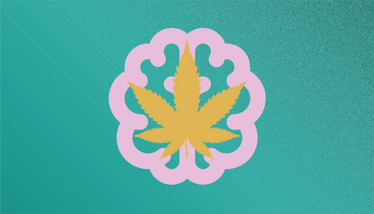Potency Problems
The link between cannabis-use disorder and schizophrenia is clearer in men than women – and appears to be dependent on cannabis THC concentrations
Jessica Allerton | | 2 min read

A population-wide study involving 6,907,859 individuals aged 16-49 not only found a correlation between cannabis-use disorder and schizophrenia (1) – but also shed light on the impact of high-potency cannabis. The main finding? The association is stronger in young males than in females (1).
Notably, the researchers from the US and Denmark adjusted for age, sex, other substance use disorders, other psychiatric disorders, and parental history of cannabis and substance use – all of which are highly associated with schizophrenia.
We spoke with Carsten Hjorthøj, Associate Professor at the Mental health services in the Capital Region of Denmark and lead author of the study, to find out more.
What were your main findings?
Our analysis strongly suggests that 20 percent of recent schizophrenia cases amongst men could have been prevented if they didn’t have a cannabis use disorder. In younger men, this proportion reached 25–30 percent.
Though we cannot offer hard-and-fast proof, our numbers align with what we expect with a causal link; we cannot explain the data without noting the connection between cannabis use and psychosis/schizophrenia. There is essentially a sizable proportion of individuals with schizophrenia who would not have developed the disease, if they didn’t use cannabis.
This discovery is important – especially with the legalization and decriminalization of cannabis and public perception that this is a harmless drug. We must highlight this information to the public so everyone understands the real risks associated with cannabis use – at least for high-potency cannabis.
What led you to conduct this particular study?
We published a study in JAMA Psychiatry in 2021 that underlines an increasing proportion of schizophrenia cases being attributable to cannabis – parallel to an increase of cannabis potency (THC concentration) on the Danish market. A team at the National Institute on Drug Abuse (NIDA) approached us after reading our study and suggested looking into potential sex and age differences, rather than adjusting statistics for these factors. We decided to collaborate to explore this further.
Were there any limitations? And where will this line of research take you next?
We only had access to diagnoses of cannabis-use disorder to work with. And that meant we couldn’t tie in factors such as what age the patient first used cannabis or what specific type they took. This just opens up further opportunities for studies moving forward.
We’re also interested in taking a closer look at the connection of increasing cannabis potency in Denmark on a fine-grained level. And there’s talk of using sophisticated statistical methods to explore how family history affects these associations.
- C Hjorthøj et al., Psychol Med (2023). DOI:10.1017/S0033291723000880.
Associate Editor, The Analytical Scientist












